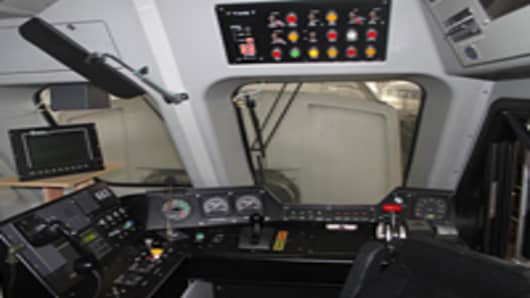Plans for a nationwide, state-of-the-art digital railroad safety system, inspired by a fatal crashin 2008, are meeting with resistance, due to a fierce debate over its effectiveness and business benefits.
Collision avoidance systems, known as positive train control, or PTC, have been on the drawing board for at least 30 years, but garnered new support in September 2008, when a Metrolink commuter train collided head-on with a Union Pacific freight train in the Chatsworth district of Los Angeles, killing 25 people and injuring at least 130 others.
Ever since then, the regional commuter line Metrolink — under pressure from state lawmakers and riders — along with freight rail companies Union Pacificand Burlington Northern Santa Fe Railway — have expedited plans to install a cutting-edge PTC system, committing $210 million to the project and promising full compliance to a post-Chatsworth federal law by mid-2013
The systems are intended to nearly eliminate human error — the main cause of most serious train crashes — through a combination of GPS technology, wireless radio and computers, replacing traditional safety methods based on mechanical signals.
“PTC offers a paradigm shift,” says Steven Ditmeyer, an adjunct professor in railway management at Michigan State University and a former research and development administrator at the Federal Railway Administration. “The railroads have traditionally handed over PTC to their signaling departments, but doing so raises costs and ties the railroads to an old paradigm.”
Some passenger railroads, backed by the Association of American Railroads and the American Public Transportation Association, say they can't afford the new PTC systems, which will also require the hiring of highly trained employees to install and maintain the new technology.
A bipartisan group in Congress has recommended a five-year delay in the deadline for implementation. The Republican-drafted legislation would also permit railroads to install simpler, more affordable safety solutions.




